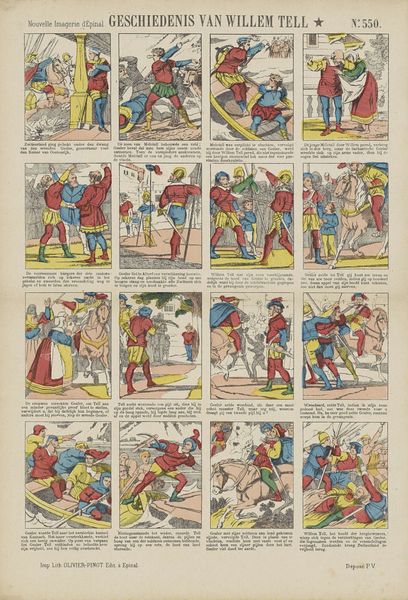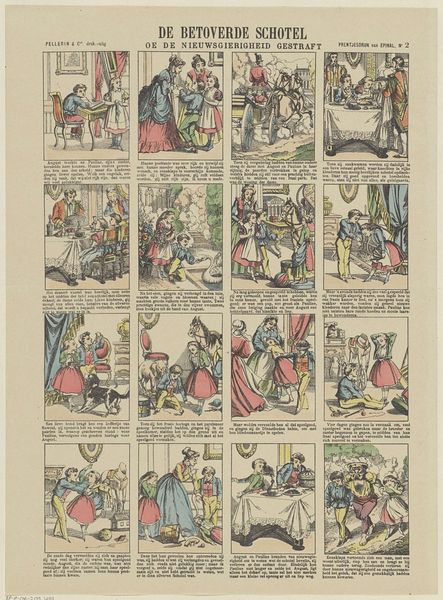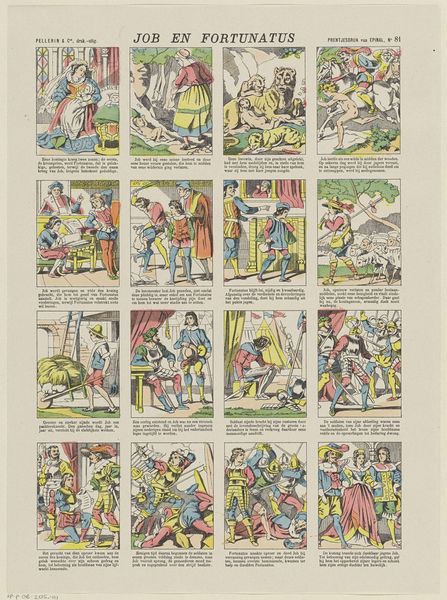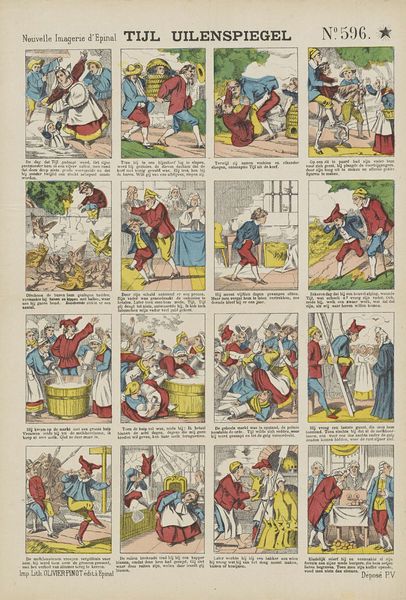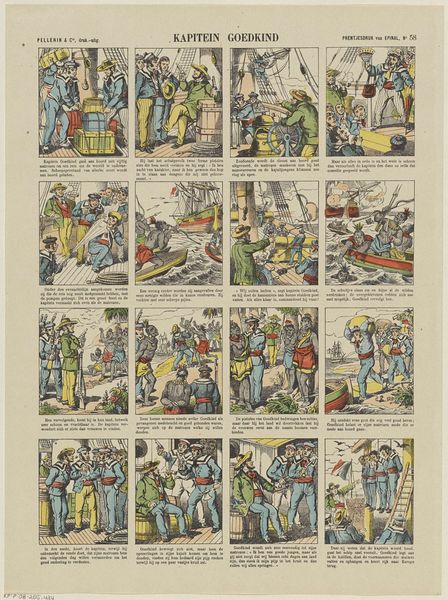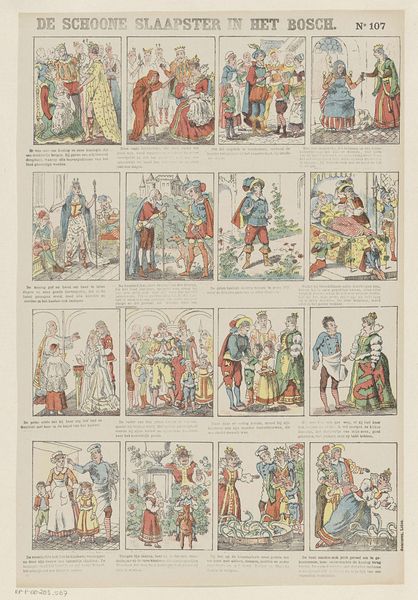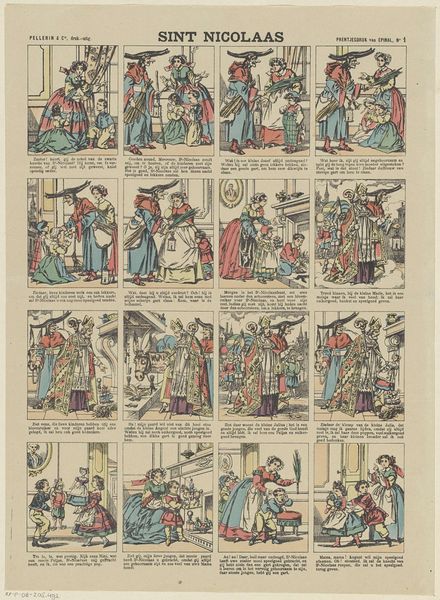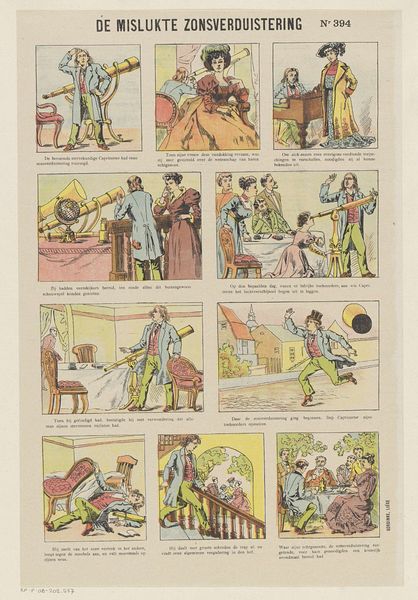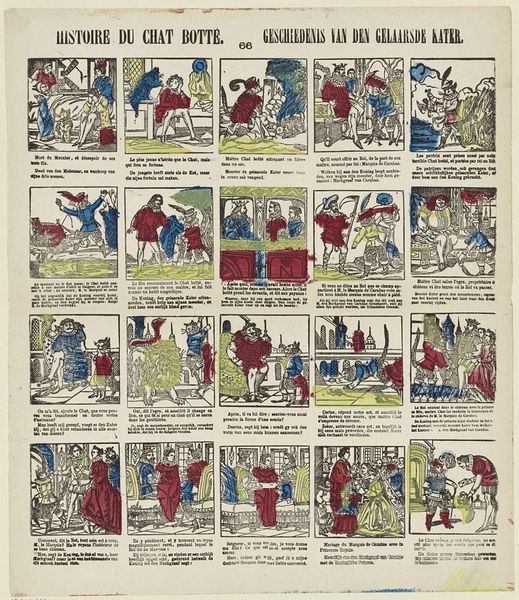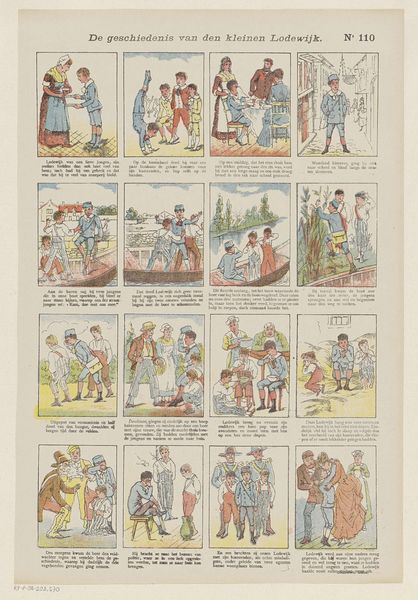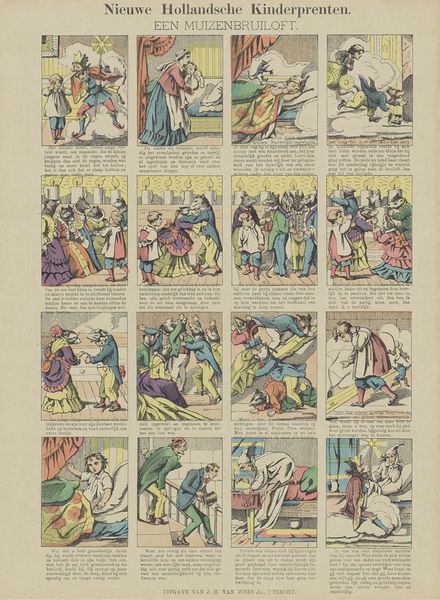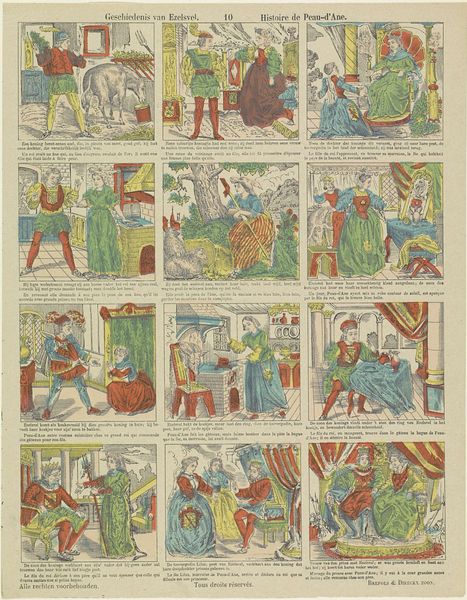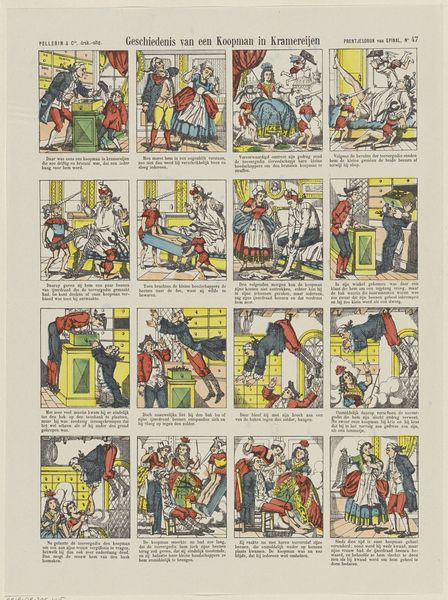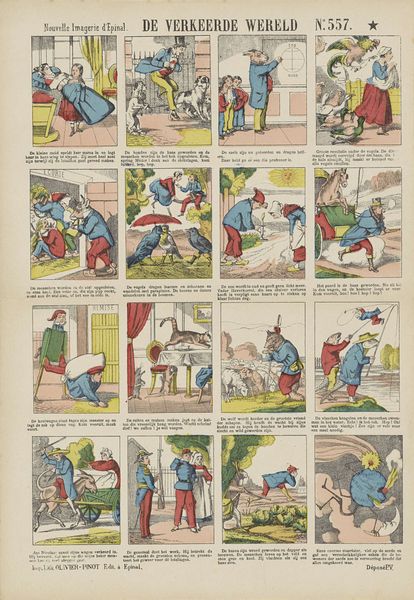
#
narrative-art
#
comic strip
# print
#
comic
#
history-painting
Dimensions: height 400 mm, width 264 mm
Copyright: Rijks Museum: Open Domain
Curator: This work, titled "De diamenten kroon," or "The Diamond Crown," dates from between 1894 and 1959 and is held here at the Rijksmuseum. It is categorized as a print. What are your initial impressions? Editor: My first thought is how much this print resembles an early comic strip. The layout is divided into a series of narrative scenes—and they depict what looks to be a melodramatic historical drama. I notice some panels more heavily colored, a rudimentary effect, as the means of production must have dictated that decision. Curator: Indeed, looking at its construction, it seems the choice of printmaking speaks volumes about accessibility. The printing techniques employed were relatively inexpensive, broadening distribution, indicating the work wasn't exclusively intended for the elite. This invites contemplation about intended audiences and dissemination. Editor: Exactly. That links strongly with how narratives are used to disseminate specific ideals—often those aligning with dominant social structures. Royalty, in this case, seem front and center; how is this "comic strip" being mobilized for public engagement, particularly during a period marked by fluctuating social and political dynamics? The sequential storytelling acts as a tool. Curator: What I find particularly compelling is how these images, likely mass-produced and distributed, would engage the public. Did such affordable accessible art promote passive acceptance or inspire deeper investigation? Who had access to the print shop to have a hand in writing or creating the panels themselves? It is not just who it depicts but also the hands that are crafting and shaping meaning in the production process. Editor: Good point! The use of caricature normalizes cultural archetypes, the heroic knight, the damsel, but in a way that might seem to humanize them too. Also I am intrigued as to the actual story of The Diamond Crown itself—this type of historical imagery has its roots, obviously, in larger discourses that promoted ideas about gender and class. Curator: Investigating such popular media can lead to profound understanding around what historical narratives were privileged and who were invited to the "table," even symbolically. Editor: It offers a space to unravel ideological foundations. Let’s use these stories as avenues to better contextualize current narratives and challenge established structures.
Comments
No comments
Be the first to comment and join the conversation on the ultimate creative platform.
